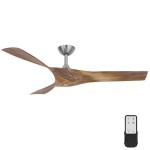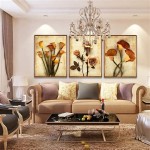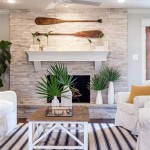How to Decorate a Baby's Room in Childcare
Creating a safe, stimulating, and comfortable environment for babies in a childcare setting requires careful planning and consideration. A well-decorated baby room contributes significantly to a child's development, emotional well-being, and overall experience within the childcare facility. This article outlines key considerations and practical tips for decorating a baby's room in a childcare environment, focusing on creating a space that is both functional and enriching.
Safety First: Prioritizing a Secure Environment
The paramount concern when decorating a baby room in childcare is safety. Every element, from furniture selection to wall decorations, must adhere to stringent safety standards to minimize the risk of accidents and injuries. This encompasses adherence to local and national regulations regarding childcare facilities.
Furniture should be sturdy, stable, and free from sharp edges or protruding hardware. Cribs must meet current safety standards, with slats spaced closely enough to prevent a baby's head from becoming trapped. Regularly inspect cribs for any signs of damage or wear. Changing tables should have safety straps and should be used with constant supervision. Rocking chairs, while comforting, should be placed away from high-traffic areas and should be used with attentiveness. All furniture should be properly anchored to the wall to prevent tipping, especially drawers and shelving units.
Flooring should be soft and easily cleanable. Consider using non-toxic, hypoallergenic mats or rugs to provide a cushioned surface for crawling and playing. Avoid loose rugs that could pose a tripping hazard. Ensure that all flooring materials are regularly cleaned and sanitized to prevent the spread of germs.
Electrical outlets should be covered with safety caps, and cords should be kept out of reach to prevent electrocution. Window coverings should be cordless or have a built-in safety device to prevent strangulation. Use non-toxic paint on the walls, and ensure that all decorations are securely mounted to prevent them from falling and injuring a child.
Regular safety checks are essential to maintain a safe environment. Implement a routine inspection process to identify and address any potential hazards. Staff should be trained to recognize and respond to safety concerns promptly.
Creating a Stimulating and Developmentally Appropriate Space
Beyond safety, the baby room should be designed to stimulate a child's senses and promote cognitive and physical development. Consider incorporating a variety of colors, textures, and visual elements to create an engaging and enriching environment.
Color plays a crucial role in influencing a baby's mood and perception. Soft, pastel colors are generally recommended for baby rooms as they create a calming and soothing atmosphere. However, incorporating pops of brighter colors can help stimulate visual development. Consider using a combination of colors to create a balanced and visually appealing space. Avoid using overly saturated or stimulating colors, as they can be overwhelming for young children. Instead, opt for muted tones and subtle variations in color.
Texture is another important element to consider. Incorporate a variety of textures through the use of different fabrics, materials, and sensory toys. Soft blankets, plush toys, and textured mats can provide tactile stimulation and promote sensory exploration. Consider incorporating natural elements, such as wood or woven baskets, to add warmth and visual interest to the room.
Visual stimulation can be achieved through the use of age-appropriate wall decorations, mobiles, and mirrors. High-contrast images and patterns are particularly beneficial for newborns, as they help develop visual acuity. As babies grow, introduce more complex images and patterns to further stimulate their visual development. Mobiles should be hung at a safe distance and should be designed to promote visual tracking. Mirrors should be shatterproof and securely mounted to the wall to prevent accidents.
Designate specific areas within the room for different activities, such as sleeping, feeding, and playing. This helps create a sense of order and predictability for the babies. A quiet sleeping area should be dimly lit and free from distractions. A designated feeding area should be comfortable and easily cleanable. A play area should be spacious and equipped with age-appropriate toys and materials.
Rotate toys and materials regularly to keep the environment fresh and engaging. This helps prevent boredom and encourages exploration and discovery. Observe the babies' interests and preferences and adjust the environment accordingly.
Promoting Comfort and a Sense of Belonging
A comfortable and welcoming environment is essential for promoting a baby's emotional well-being. The baby room should be designed to feel like a safe and nurturing space where babies feel secure and loved. Consider incorporating elements that promote comfort, relaxation, and a sense of belonging.
Maintaining a comfortable temperature is crucial for ensuring a baby's well-being. The room should be kept at a consistent temperature that is neither too hot nor too cold. Use a thermometer to monitor the temperature and adjust the thermostat accordingly. Proper ventilation is also important for maintaining a healthy environment. Ensure that the room is well-ventilated to prevent the buildup of stale air and odors.
Lighting plays a significant role in creating a comfortable atmosphere. Use a combination of natural and artificial light to create a well-lit space that is not too harsh or glaring. Dimmable lights can be used to create a more relaxing atmosphere during naptime. Avoid using fluorescent lights, as they can be too stimulating for babies. Instead, opt for warm, soft lighting that creates a calming effect.
Personalization can help create a sense of belonging and make the babies feel more connected to the space. Display photos of the babies and their families on the walls. Create a bulletin board where parents can share information about their children. Use name tags to identify each baby's crib or personal space. This helps create a sense of individual identity and fosters a sense of community within the childcare setting.
Comfortable seating for caregivers is also important. Provide rocking chairs or comfortable armchairs where caregivers can sit and hold the babies. This creates a more nurturing and relaxed environment for both the babies and the caregivers. Ensure that the seating is ergonomically designed to prevent discomfort and strain.
Sound management is also important. Create a quiet and peaceful environment by minimizing noise levels. Use sound-absorbing materials, such as rugs and curtains, to dampen sound. Consider playing soft, soothing music to create a calming atmosphere. Avoid exposing babies to loud or jarring noises, as this can be distressing.
In summary, decorating a baby's room in childcare demands meticulous attention to safety, developmental appropriateness, and comfort. By prioritizing these elements, childcare providers can create a nurturing and stimulating environment that supports the healthy growth and development of the infants in their care.

Nursery Room Ideas Childcare Rooms

Designing Playful Learning Spaces For Babies And Toddlers

Pin On Daycare Ideas

The Stables Baby Room Evolution Childcare

Designing Playful Learning Spaces For Babies And Toddlers

The Willows Baby Room Evolution Childcare

Daycare Ideas Interior Design Inspiration For Your Childcare Center

Nursery Learning Environment Explore Our Rooms

Infant Room Daycare Classroom Decor

Designing Playful Learning Spaces For Babies And Toddlers
Related Posts







